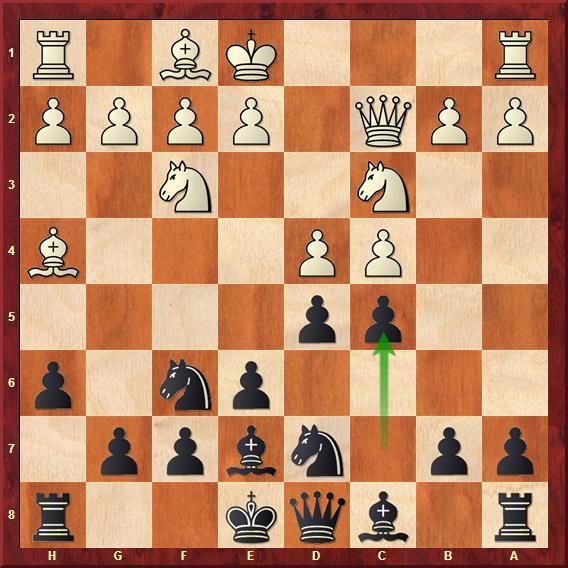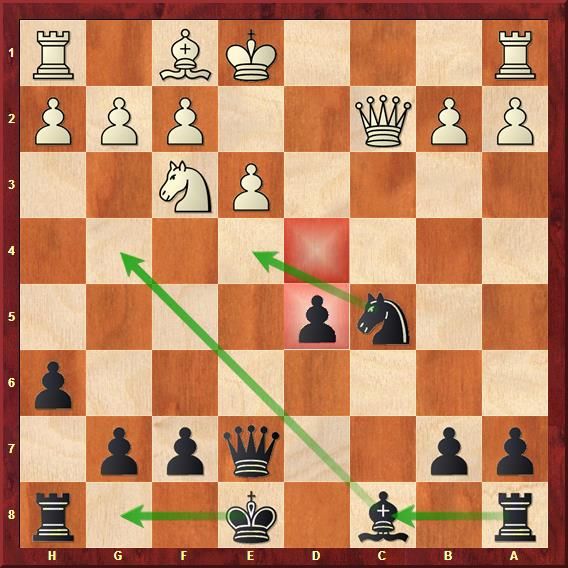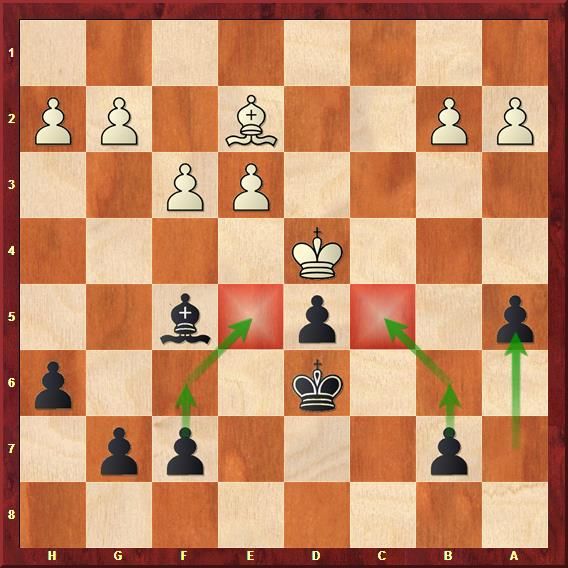Tal Memorial 06: What no one tells you about Strategic Endings
Tomashevsky took on Viswanathan Anand with the white pieces in the sixth round of the 2016 Tal Memorial. The game began as a Queens Gambit Declined where Anand chose to attack White's center and reach a position with an isolated queen's pawn. Tomashevsky arguably had a slight edge, But Anand showed how precisely to handle such delicate positions. What happened next was a fine piece of strategic endgame displayed by Anand. Enjoy, and learn from our report with in-depth analysis, video analysis and annotations.
Tal Memorial 06: What no one tells you about Strategic Endings
One of the reasons that makes Anand so powerful is his understanding of strategic endgames.
Tomashevsky took on Viswanathan Anand with the white pieces in the sixth round of the 2016 Tal Memorial. The game began as a Queens Gambit Declined where Anand chose to attack White's center and reach a position with an isolated queen's pawn. Tomashevsky arguably had a slight edge, But Anand showed how precisely to handle such delicate positions. What happened next was a fine piece of strategic endgame displayed by Anand.

Now, things turned interesting because Black has to enter a position where he is left with an isolated pawn in the middle. But such positions are quite common.

White seems to have a small theoretical edge. Besides the weakness of d5 pawn, the d4 square is blockaded. It is interesting to see Anand's calm exchange of pieces here making his defensive task objectively easier.


Anand traded all the pieces in a methodical manner to reach a position where he has to display good strategic understanding of the endgame. Before moving any further, have a go at Sagar Shah's video analysis. He will ask you a a question. You have to pause the video at this point and you have to come up with a good plan.

The whole strategic plan revolves around the idea to put the pawn on opposite colour squares of the bishop and preparing to place the pawn on b6, also stopping White's b4. By placing the pawns on b6 and f6, the black king has the scope of moving away from d6 without letting the white king infiltrate.
The ideas to take away form this example is that in such strategic endgame positions,
- put your pawns on opposite colour of the bishop
- Use your pawns to control all entry squares
- prevent opponent from expanding on to the entry point (here, Anand stopped b4.)
Evgeny Tomashevsky-Viswanathan Anand (Notes by IM Sagar Shah)
[Site "Moscow"]
[Date "2016.10.02"]
[Round "?"]
[White "Tomashevsky, Evgeny"]
[Black "Anand, Viswanathan"]
[Result "1/2-1/2"]
[ECO "D61"]
[WhiteElo "2731"]
[BlackElo "2776"]
[Annotator "Sagar Shah"]
[PlyCount "97"]
[EventDate "2016.??.??"]
[SourceDate "2003.06.08"]
sticks to the line that he has been essaying since the Candidates 2016 in
February.} (4... Be7 5. Bf4 O-O 6. e3 Nbd7 7. a3 c5 8. cxd5 Nxd5 9. Nxd5 exd5
10. dxc5 Nxc5 {is very similar to the structure that arises in the game.}) 5.
Bg5 {41} h6 {15} 6. Bh4 {14} Be7 {7} 7. Qc2 {59} (7. e3 Ne4 {is also known as
the Andersson line. This is covered in depth by Daniel King in his Powerplay
23.}) 7... c5 $1 {217 Anand took three minutes to make this move. Of course he
wasn't out of his prep. He was just trying to remember what he had prepared.}
8. cxd5 {43} Nxd5 {19} 9. Bxe7 {68} Qxe7 {33} 10. Nxd5 {46} exd5 {22} 11. dxc5
{73} Nxc5 {44} 12. e3 {64 Let's just talk about this position, because it a
very common Isolated Queen Pawn situation. It goes without saying that white
is slightly better because the d5 pawn is weak and d4 is well blockaded but
what black has in return is activity and free flowing development and that is
the reason why he can hold the balance.} O-O {26} 13. Be2 {126} Bg4 {87} 14.
O-O {87} Rac8 {58} 15. Rac1 {125} Qf6 {1159} 16. Qc3 {183} Qxc3 {377 Anand is
not averse to going into an endgame. In fact he has figured out that the
easiest way to hold this position is by exchanging the rooks as well and going
into a minor piece ending.} 17. Rxc3 {6} Ne4 {27} 18. Rcc1 {308} Rfd8 {123} (
18... Rxc1 19. Rxc1 Rc8 20. Rxc8+ (20. Rd1 Rc2 $17) 20... Bxc8 {This is
similar to what we will see in the game.}) 19. Rfd1 {1029} Kf8 {410} 20. Kf1 {
212} (20. h3 Bxf3 21. Bxf3 Rxc1 22. Rxc1 Ke7 {Should be around even.}) 20...
Ke7 {389} 21. Nd4 {855} Rxc1 {264} 22. Rxc1 {12} Rc8 $1 {8 Wise thinking by
Anand. Once the rooks come off the black king can take part in the battle with
much more ease.} 23. Rxc8 {403} Bxc8 {14} 24. Ke1 {4} Bd7 {59 Controlling b5
square and preparing to exchange the knights.} 25. f3 {557} Nd6 {141} 26. Kd2 {
12} Nf5 {408} 27. Nxf5+ {605} Bxf5 {11 At first sight this may look like an
extremely bad position for Black. Not only is the d5 pawn on the same colour
as the bishop but White can bring his king upto d4 from where it cannot be
moved. But believe me when I say that Anand has studied similar endgame and
has come to the conclusion that black can hold. Otherwise there was simply no
way that he would have ventured into this position. Look how he easily holds
here.} 28. Kc3 {4} Kd6 {164} 29. Kd4 {51} a5 $1 {307 Putting the pawn on
opposite colour of the bishop and preparing to place the pawn on b6, also
stopping White's b4. By placing the pawns on b6 and f6 black king has the
scope of moving away from d6 without letting the white king infiltrate.} 30.
Bb5 {357} b6 {147} 31. Ba4 {70} Bc8 {7} 32. a3 {250} f6 $1 {31 Part of the plan
} 33. b4 {319} axb4 {15} 34. axb4 {3} Bb7 {26} 35. Bb3 {70} Bc6 {16} 36. Ba2 {6
} Bb7 {11} 37. h4 {444} Bc6 {123} 38. Bb3 {19} Bb7 {36} 39. b5 {207} Ba8 {
10 Black's bishop is reduced to just two squares but it is very difficult for
white to make progress. Black keeps moving his bishop from a8 to b7 and waits
for white to do something. Tomashevsky has to find a way to breakthrough on
the kingside.} 40. Ba2 {0} Bb7 {0} 41. h5 {1411} Ba8 {23} 42. Bb1 {36} Bb7 {43}
43. Bf5 {34} Ke7 {13 now we see the usefulness of the moves b6 and f6.} 44. Bh3
{232} Kd6 {12} 45. Bg4 {113} Ke7 {9} 46. f4 {157} Kd6 {11} 47. Bf5 {134} Ke7 {
20} 48. g3 {74} (48. e4 dxe4 49. Bxe4 {and now Black must refrain from
exchanging the bishops and he is alright.} Bc8 $1 50. Kd5 Bb7+ 51. Kd4 Bc8 52.
Bc6 Kd6 $11) 48... Kd6 {8} 49. Bg4 {89 On the surface this may look like a
boring game but there is a lot that you can learn from it, especially Vishy's
handling of the IQP structure.} 1/2-1/2
Karsten Mueller's Strategic Endgame DVD
Download all games in PGN with annotated games by GM Alejandro Ramirez and IM Sagar Shah

